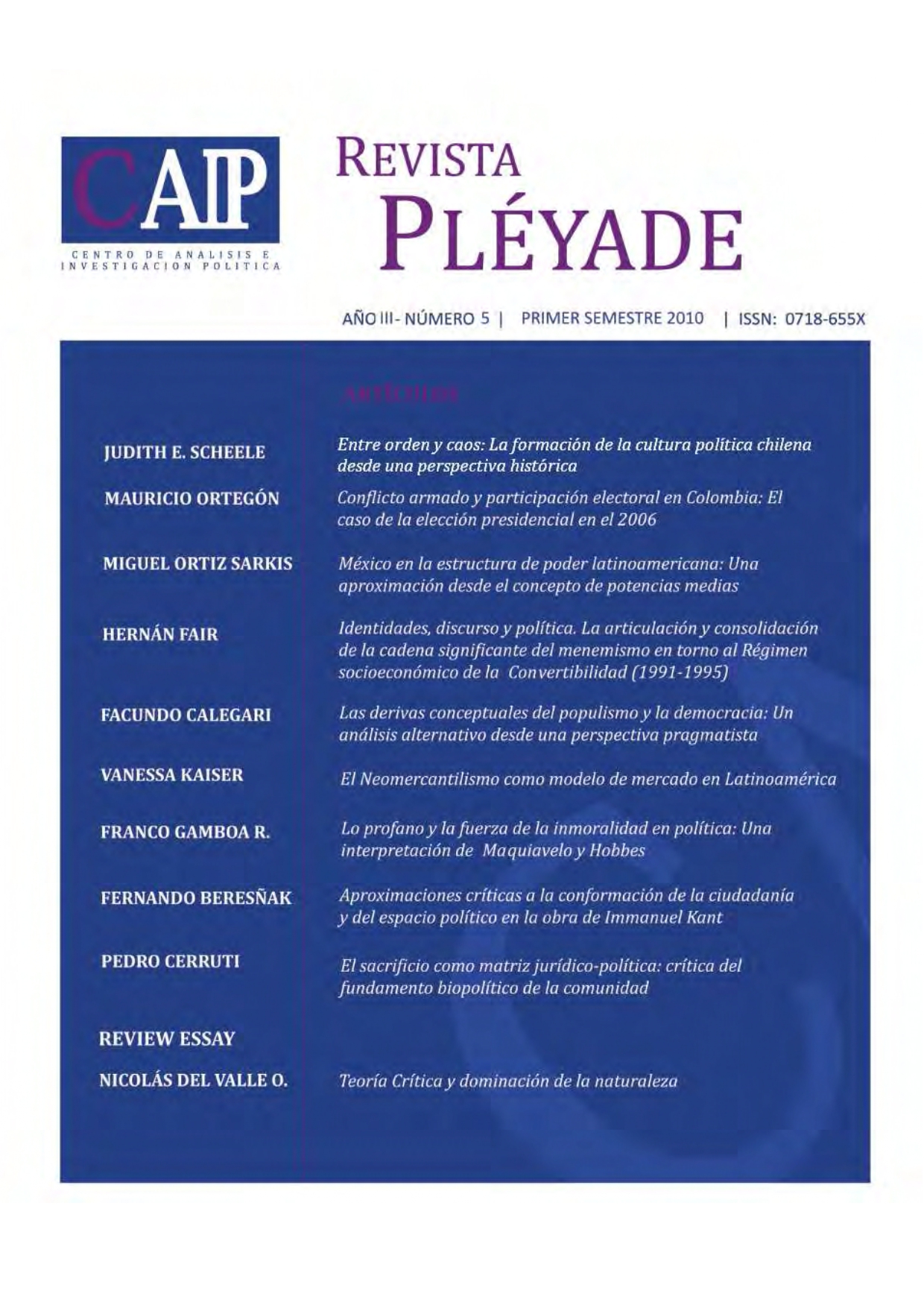Sacrifice as a Juridical-Political Matrix. Critique of the Biopolitical Fundaments of Community

Published 2010-07-18
Keywords
- sacrifice,
- biopolitics,
- community
How to Cite

This work is licensed under a Creative Commons Attribution-NonCommercial 4.0 International License.
Abstract
This paper will reflect on the problem of sacrifice and the sacred from a biopolitical perspective, aiming to make a contribution to the studies about the fundaments of the political community. The sacrifice is understood as a dispositive that establishes a fundamental imbrication between the bare life and the political, juridical, and religious spheres. For that purpose, it establishes a political philosophical debate between the works of Giorgio Agamben and Roberto Esposito, from the books assembled under the denomination Homo Sacer in first case, and the trilogy Communitas, Immunitas, and Bios in the second case. Also, it considers Henri Hubert y Marcel Mauss's Sacrifice: Its Nature and Functions (1899), Sigmund Freud's Totem and Taboo (1912) and René Girard’s Violence and the Sacred (1972), essentials in the reconstruction of the sacrificial paradigm; and it takes into account Émile Benveniste’s study of the Indo-European juridical-political matrix in his monumental work The Vocabulary of Indo-European Institutions (1969). Finally, this aproach will provide an interpretation of Walter Benjamin’s Critique of Violence (1921), since in these debates the problem of the “dogma of the sacredness of life" there referred is at stake.